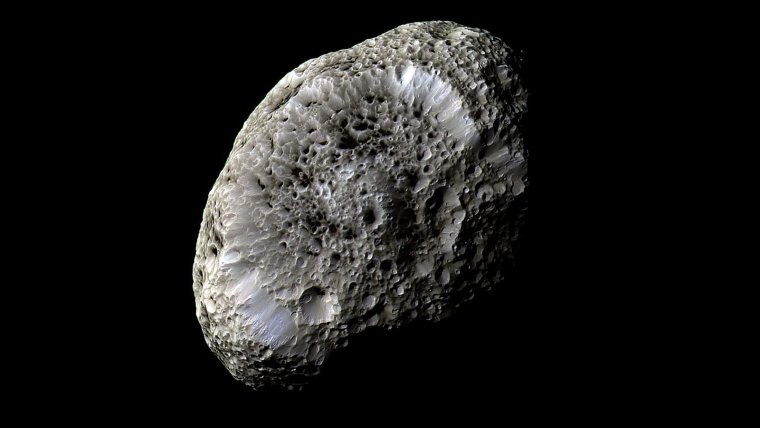| News / Space News |
Cassini Prepares for Last Up-close Look at Hyperion
NASA | MAY 31, 2015
NASA's Cassini spacecraft will make its final close approach to Saturn's large, irregularly shaped moon Hyperion on Sunday, May 31.

This false-color view of Hyperion was obtained during Cassini's closest flyby of Saturn's odd, tumbling moon on Sept. 26, 2005. ![]()
The Saturn-orbiting spacecraft will pass Hyperion at a distance of about 21,000 miles (34,000 kilometers) at approximately 6:36 a.m. PDT (9:36 a.m. EDT). Mission controllers expect images from the encounter to arrive on Earth within 24 to 48 hours.
Hyperion (168 miles, 270 kilometers across) rotates chaotically, essentially tumbling unpredictably through space as it orbits Saturn. Because of this, it's challenging to target a specific region of the moon's surface, and most of Cassini's previous close approaches have encountered more or less the same familiar side of the craggy moon.
Cassini scientists attribute Hyperion's unusual, sponge-like appearance to the fact that it has an unusually low density for such a large object -- about half that of water. Its low density makes Hyperion quite porous, with weak surface gravity. These characteristics mean impactors tend to compress the surface, rather than excavating it, and most material that is blown off the surface never returns.
YOU MAY ALSO LIKE


